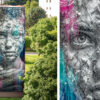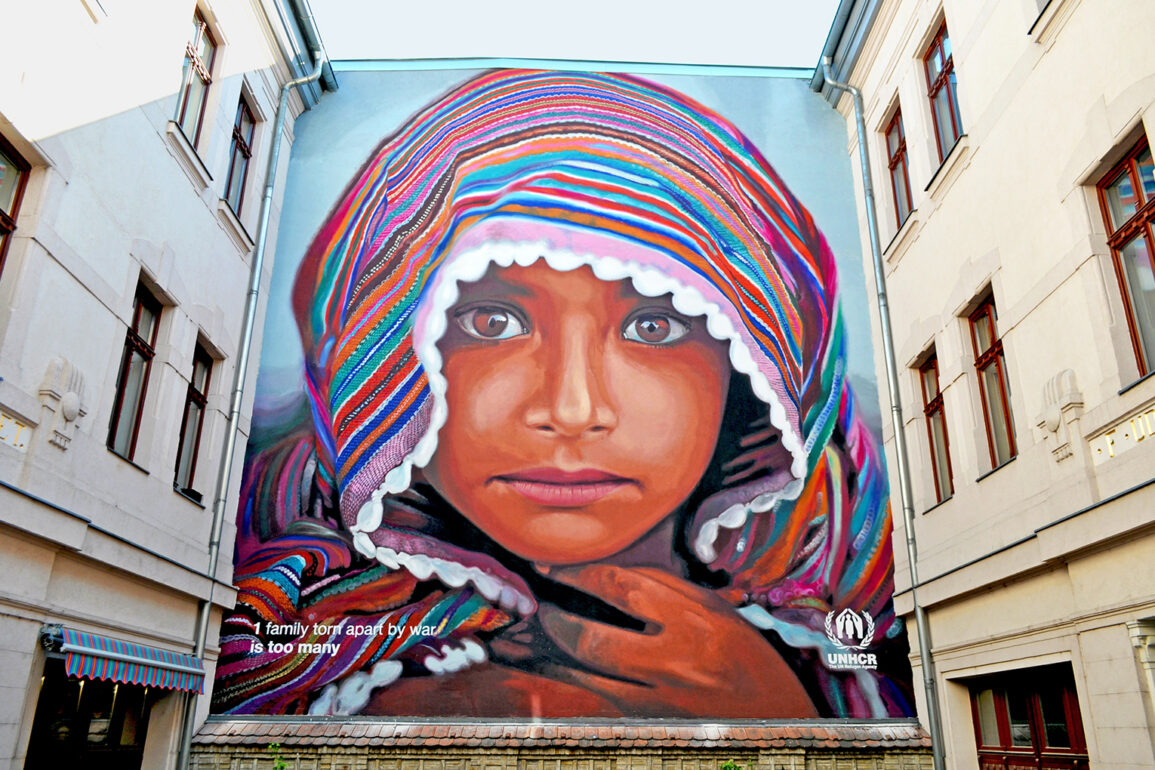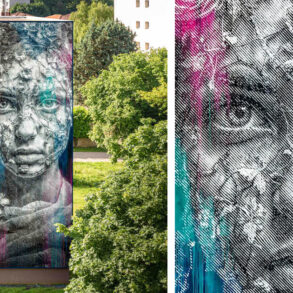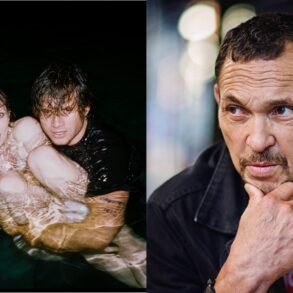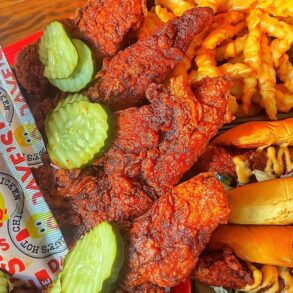“The big murals are commissioned by the District VII municipality and the government or created during street art festivals, which is why 95% of the good ones are there,” Höfle says. He moved to Budapest from Szombathely (about 220 km southwest of Budapest by road, near the Austrian border) 27 years ago to study.
“I fell in love with the city on my first day here and started to explore on my own,” he tells me. After studying and working in a different field, “I decided to combine my passion with my work and create walking tours that included street art rather than showing tourists sights they could see on regular walking tours.”
Budapestflow’s alternative tours include showing tourists the murals of the Seventh and pointing out examples of sticker and paste-up art while telling the stories behind them.
The murals are made by Hungarian companies such as Neopaint Works but also by well-known international artists. Höfle’s two favorite murals happen to be by Spanish artists.
“Motivation is a Wonderland” at Kertész utca 27 by Dan Ferrer is a slightly warped take on Alice in Wonderland, intended to show that children are the future and need nurturing. It was painted in 2017. Ferrer’s work also adorns walls in London, Milan, New York, and Rome.
Painted by Spanish artist Okuda San Miguel, “Angel of Budapest” is at Dob utca 4, part of the World War II Jewish Ghetto. The angel is Spanish diplomat Ángel Sanz Briz, who is credited with saving around 5,000 Hungarian Jews from being murdered during the Holocaust. “This is a beautiful, colorful mural,” Höfle says. “It’s very well executed, so it’s great to look at. But it also makes us remember the lessons of history.”
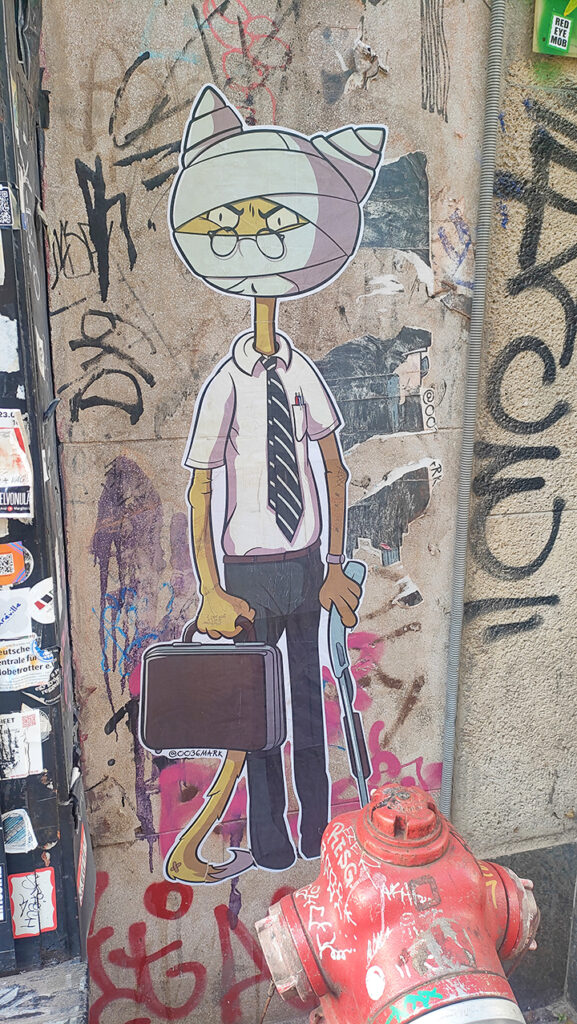
Mash-up Cartoons
Unlike the murals, sticker and poster art isn’t commissioned. It’s made by artists who choose their own subjects, which can be satirical and political. Höfle’s favorite street artist is 0036Mark, named for Hungary’s international telephone country code, who makes “mash-ups using cartoon characters from the 1980s communist era and allusions to paintings and movies.”
For 0036Mark and Höfle, the change from communism to capitalism happened in their childhood. The golden age of Hungarian cartoon-making morphed into a time when Hungarians gorged on Western blockbuster movies, duplicated time and again on videocassettes. Cartoons giving way to ’90s action, sci-fi and horror movies symbolize regime change.
The work of 0036Mark is colorful and intriguing, but without Höfle interpreting it, I wouldn’t have got the point. That context is a good reason to take his tour. “We share generational memories about this time of great change,” he says.
If you’re looking for something more underground in District VII, keep an eye out for the stenciled logo of the Magyar Kétfarkú Kutya Párt (The Hungarian Two-Tailed Dog Party) which criticizes the government and the political elite using street art.
All over the Western world, street art has risen out of its underground origins to transform urban landscapes and influence real estate markets. Cities worldwide have realized that street art revitalizes and beautifies neglected neighborhoods, increasing property values, attracting tourists and foot traffic to more out-of-the-way locations and strengthening community identity.
The Mayor of District VII was no doubt well aware of the potential appeal of colorful murals on his storied, bullet-scarred walls when he began forging a close relationship with Neopaint Works, responsible for around 20 murals in the district and founded by Barnabás Jankovits in 2005.
Part of the Scene
“We started when street culture in the form of DJing, graffiti art and skateboarding was beginning in Budapest,” he tells me. “I wasn’t a graffiti artist, but I liked being part of the scene. I saw that there were many people who wanted a painting for their home, restaurant or company, but no one was putting them together with the artists. I made flyers and then a website to do precisely this. Business took off, and we became a professional group.”
From the start, Jankovits and his crew wanted to work on big walls. Around 2010, when street art was often regarded as vandalism, the forward-looking mayor of the district got in touch. The first two murals Neopaint made attracted plenty of interest from a Hungarian media, hungry for something new, and the company’s fortunes transformed.
Since then, Neopaint says it has forged an excellent relationship with the District VII municipal council. Murals are made by a core team of four artists that can expand to as many as 10 for a large-scale project. Three days are spent preparing, making highly accurate stencils and choosing a color palette, and the actual painting takes around four days, surprisingly quick.
As Jankovits says, somewhat ruefully, “It’s the bureaucracy that’s tough. For example, it took four months to get the permissions we needed for our tribute to pianist György Cziffra at Batthyány tér metro station on the centenary of his birth in 2021.”
The tribute was Neopaint’s idea. “It’s a busy metro station, and this is a great way to make Hungarian heroes and cultural figures better known. Young people and tourists who don’t know who someone like Cziffra is respond to a mural in a way they won’t to a monument.”
Neopaint is looking to get into the burgeoning new market for advertising murals. “Companies like Heineken understand how eye-catching murals are and now want to advertise more artistically,” Jankovits explains. “It’s big in Western countries and Poland, but agencies here are only now waking up to the possibilities. We want them to think of us.”
Find out more about street art walking tours at budapestflow.com. You can view Neopaint’s work on its Hungarian-language website: neopaint.hu.
This article was first published in the Budapest Business Journal print issue of April 4, 2025.
This post was originally published on this site be sure to check out more of their content.


